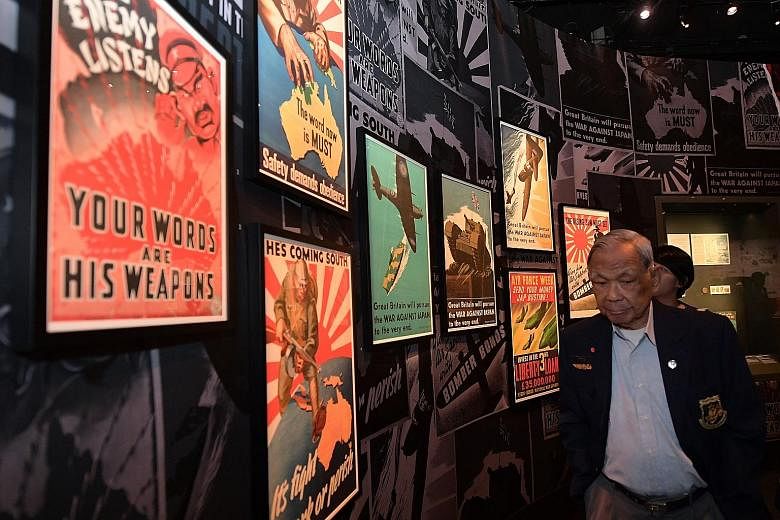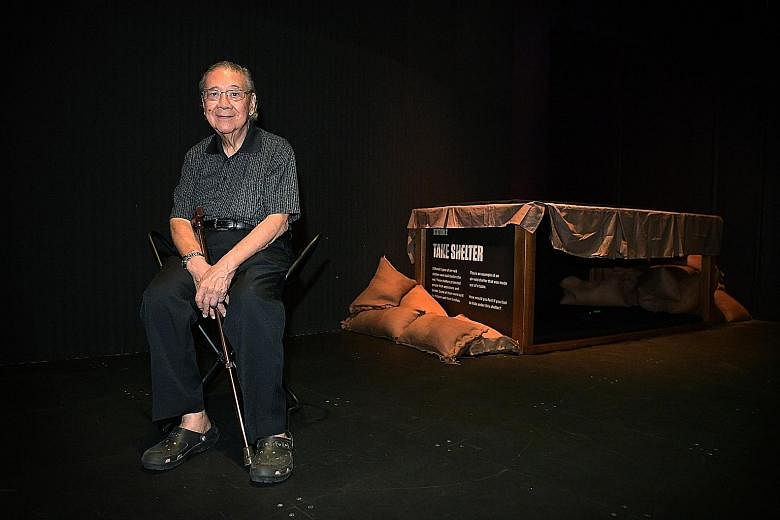At age eight in 1942, Mr William Gwee was forced out of his home in Joo Chiat, along with his parents and six siblings.
It was the early days of the Japanese invasion of Singapore, and a bomb had landed two doors away, devastating their family home.
Mr Gwee and his family had to move in with relatives and friends, carrying only a few possessions in cloth bundles.
Returning after the school holidays to start Primary 2 during the Japanese Occupation, he found that his English school in Katong had turned into a Japanese school.
By 1944, "when things were not going well for the Japanese, they recruited a lot of local youth and tried to form an army in Singapore. The bright boys in the school all got recruited, so before I was called, my father said to leave school", Mr Gwee, now 83, said yesterday.
His is one of several stories of survival featured in Witness to War: Remembering 1942, a new exhibition at the National Museum of Singapore that looks at the untold stories of the events leading up to the Japanese Occupation and the aftermath of Singapore's fall.
Using "witnesses to war" such as artefacts and accounts from war survivors and veterans, the exhibition, which opens to the public today and runs till March 25 next year, aims to offer a fresh perspective on the war and the lead-up to it.
It features over 130 artefacts from the national collection, as well as many on loan from overseas museums and institutions.
Highlights include the personal diary of late Singapore war hero Lim Bo Seng, on public display for the first time, and a 25-pounder field gun used by British and Commonwealth armies in World War II.
But it is the human stories that set the exhibition apart, museum director Angelita Teo said at its launch yesterday. Calling it the museum's most ambitious World War II exhibition, she said feedback from a cross section of society was sought on what they would like to see.
"The most repeated words were 'different', 'people' and 'stories'. What they hoped to see was more diversity with a special focus on personal experiences. This inspired our curators to go out and collect stories from scratch," said Ms Teo.
For the first time, the museum also involved secondary and tertiary students, who interviewed war survivors and helped with the presentation of their stories.
Minister for Culture, Community and Youth Grace Fu, who met with the war survivors featured in the exhibition, said there was much to learn from their stories. The exhibition commemorates the 75th anniversary of the fall of Singapore this year. Admission is free for Singaporeans, permanent residents and visitors aged six and below.



